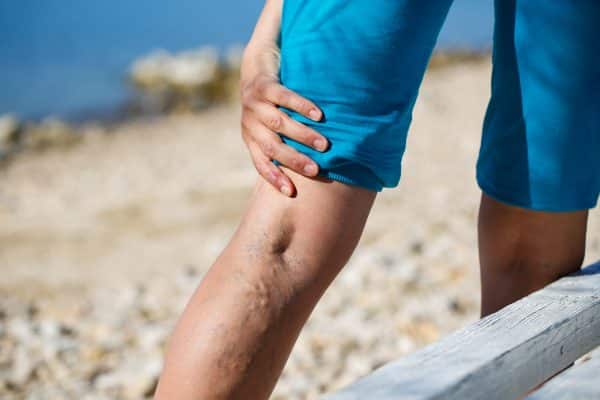Vein Treatment Clinic, San Diego
Vein Treatment Clinic is a state-of-the-art and accredited spider and varicose vein treatment center located in La Jolla, a neighborhood on the outskirts of San Diego, a short drive from the Torrey Pines beach state park. Our medical center is widely recognized as the best varicose vein clinic in SD, as evidenced by our unanimous 5-star ratings and reviews from patients. Our perfect ratings show that we have exceptional standards of patient care and a perfect track record. Indeed, we’ve performed hundreds of minimally invasive procedures without complications.
One of our recent patients said, ”I have long suffered from the effects of the advanced stages of varicose veins. I finally went to The Spider and Varicose Vein Clinic for assistance. Dr. Billy and the team were amazing. After an ultrasound, consultation, and working with my insurance, we started my Saturday morning treatments. Expectations were set, met, and exceeded. I especially appreciated Dr. Billy checking on me after each treatment! I have seen significant improvement so far. I highly recommend Dr. Billy and the team! Thank you!”
Several factors contribute to our flawless reputation and track record, including our fellowship-trained vein doctors, amazing vein care staff, and the use of cutting-edge technologies. But the primary reason for our exceptional varicose vein treatments is a uniquely comprehensive vein care process. Most vein centers treat varicose veins and spider veins without addressing the root cause of your vein problems — venous insufficiency. That approach increases the likelihood that your vein problems will return. We always diagnose and treat the underlying venous insufficiency, ensuring optimal results with little-to-no risk of recurrence.
This article provides a step-by-step overview of our vein treatment process from consultation to recovery. You may schedule your consultation online or call us at +1 858-461-7886 — please request a free insurance verification before your appointment.
Step 1: Initial Consultation
During your initial consultation, the vein doctor’s primary goal is to understand your unique concerns, goals, and expectations. We examine your leg veins, discuss your symptoms, and review your medical history. Our vein doctor looks for the signs and symptoms of venous insufficiency, the root cause of most vein problems. They might ask if you experience leg heaviness, restless leg syndrome, frequent leg cramps, leg pain, and leg swelling, some of the earliest warning signs of venous insufficiency.
The initial consultation also includes vascular imaging tests and diagnosis. We use an advanced vascular imaging test called Duplex Ultrasound to project a visual representation of the blood flow in your leg veins on a computer screen. The vein doctor studies the direction of blood flow to determine if you have chronic venous insufficiency — backward blood circulation represents vein disease. Vascular imaging tests reveal the diseased saphenous vein responsible for your vein problems, and they support your insurance claims.
Step 2: Treatment Planning
Our vein doctors provide personalized vein treatments that address the root cause of your vein problems and your unique cosmetic goals. They discuss your vein treatment options, highlighting the unique characteristics, pros, cons, and costs of each vein treatment. We also provide a detailed breakdown of the costs of all the vein treatments and their insurance coverage. As such, you have all the information necessary to make an informed decision — our vein doctors offer their opinion on the ideal treatment options for you.
Step 3: Primary Vein Treatment
If you have chronic venous insufficiency, you need one of the following minimally invasive procedures — radiofrequency ablation, endovenous laser ablation, or VenaSeal. These procedures are suitable for people with underlying vein disease. Until we treat the deep veins, there’s no point in treating the superficial leg veins. The primary vein treatments use various methodologies to seal or collapse the diseased saphenous vein responsible for your vein problems. Once the diseased vein is sealed, the accumulated blood reroutes to healthier leg veins, restoring effective blood circulation.
The ablative procedures (radiofrequency and laser) involve making small incisions on the skin’s surface to drive an endovenous laser or catheter into the diseased vein. The catheter or laser fiber generates thermal or laser energy to collapse the diseased saphenous vein, restoring effective blood circulation to the heart. VenaSeal is an FDA-approved medical adhesive injected into the diseased saphenous vein to seal its walls, turning it into a hardened tissue that gets absorbed by the body. All minimally invasive procedures are equally safe and effective.
Step 4: Cosmetic Vein Treatment
The cosmetic vein treatments are meant for patients with superficial varicose veins and spider veins — not underlying chronic venous insufficiency. The best cosmetic vein treatments include ambulatory phlebectomy and sclerotherapy. During ambulatory phlebectomy, the vein doctor makes small incisions on the skin’s surface to physically extract the bulging leg veins. During sclerotherapy, the veins doctor injects a sclerosant solution into the spider veins to fuse their walls, turning them into hardened tissues eventually absorbed by the body. The spider veins eventually fade away in a few weeks.
Step 5: Recovery & Aftercare
Minimally invasive procedures conclude within 30 to 60 minutes with no extended recovery periods. The vein doctor will provide an overview of your post-treatment guidelines, including activity limitations and recommendations. You should wear compression stockings for several weeks and engage in cardiovascular activities that work your calf muscles, such as running, swimming, and cycling. However, you can resume most of your daily activities immediately — no downtime.
